The Food Lover’s Guide to Summer Grilling
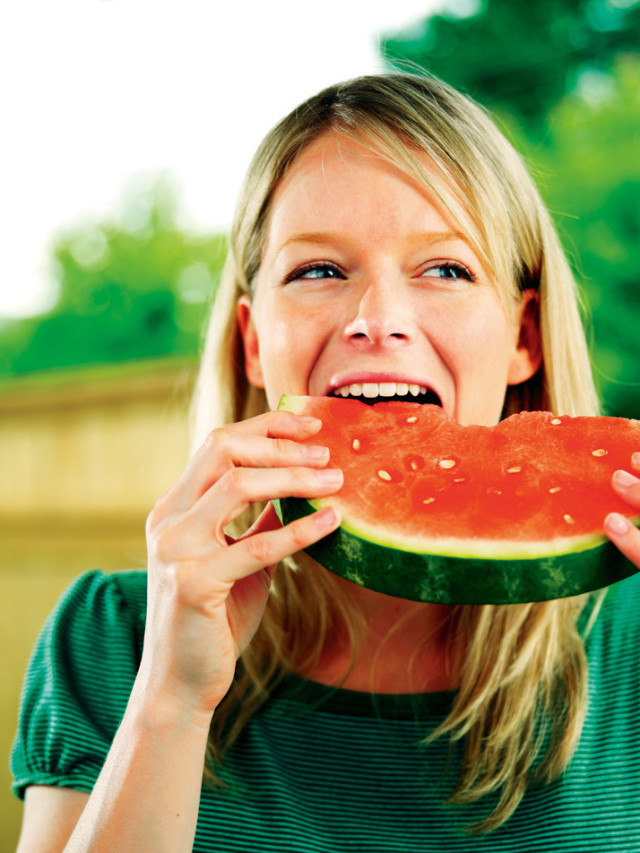
IT’S SUMMERTIME and the living is especially easy, because the peaches are ripe, the watermelon is juicy and the steaks are seared and smoky. The sound of ice clinking in highball glasses rings through the streets. Out on the porch, fresh lemonade’s being poured. Someone’s harvesting sweet sungold tomatoes. The neighbors are smoking a brisket, and across the street they’re grilling burgers and dogs. Somewhere, an ice chest has just lost its last bottle of beer. And no one misses the ice cream man, because we’ve whipped up a batch of gelato at home.
Summer should always be this idyllic, but sometimes achieving that perfect golden skin on your chicken or spiking those cocktails with just the right amount of lemon juice is more challenging than we’re willing to let on. Hence this ultimate guide to summer food (and drink). Dog-ear the corners, splatter sauce on it—just keep it away from that pile of newspapers you use to fuel your flames.
Read More: The Food Lover’s Guide to Summer Cocktails and Summer Entertaining
{page break}
Grilling Beef
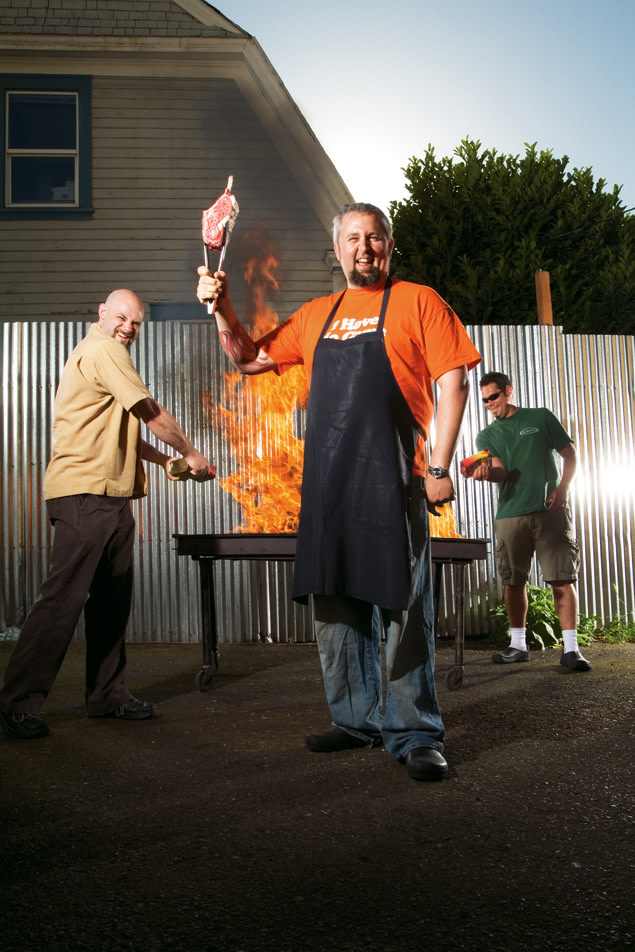
The esteemed 19th-century French chef Marie-Antoine Carême once wrote, “Beef is the soul of cooking.” Were Carême alive today and living in America, it’s quite likely he might amend that statement to, “Beef is the soul of ’cuing.” There may be no better symbol for our country’s primordial, almost patriotic, obsession with grilling than the hamburger or the steak. But while burgers and New York strips or rib eyes are quick and easy to throw onto the ’cue, isn’t the soul of grilling (or, rather, barbecuing) really about standing idly around the fire, beverage in hand, and shooting the breeze?
With this in mind, we asked Jason Owens, John Gorham and Ben Dyer, co-owners of Simpatica Catering, Simpatica Dining Hall and Viande Meats & Sausage, to develop a grilling menu that centered around a cut of beef that would require a slightly longer cooking time. Considering the quality and variety of meat they have access to through Viande, we knew they’d have no trouble—plus, that bold flame tattoo climbing up Gorham’s right arm seemed like a good indication that these guys would know what they were doing when it came to matching flesh with fire.
{page break}
Grilling Beef
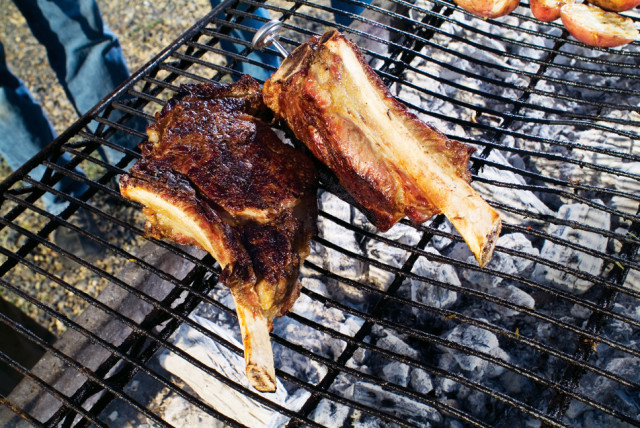
For the trio’s simple dish of dry-aged, bone-in prime rib with a grilled vegetable salad, it’s best to generously salt and pepper the meat at least a day beforehand. “If you salt it right before you grill it,” says Owens, “you’re just seasoning the outside.”
Instinct may tell us to keep the meat sealed tightly in the fridge while it sits, but Dyer says it’s really important to let the meat sit in your fridge unwrapped. “Air is good for meat,” Dyer stresses. “It’s part of the aging process.”
And while all three meat masters agree that you should always pull the steak out one-half hour to an hour before you are going to grill it, their opinions differ when it comes to discerning when the meat is done. Owens believes in using the intuitive “feel method”—touching the meat with your thumb or forefinger throughout the cooking process to ascertain its rareness—but when it comes to thicker cuts of meat, Dyer and Gorham are firm believers in the meat thermometer. “The most expensive thing you’re ever going to cook is your protein,” says Gorham, “and you don’t want to screw it up.”
{page break}
Grilling Chicken

Let’s face it: Very few of us haven’t at one time or another had to endure a barbecue that consisted of nothing more than a mountain of charred, dried-out chicken breasts and torched drumsticks. Some of us are probably even guilty of hosting such a sorry excuse for a cookout ourselves, which raises two questions: Why do the majority of backyard grillers believe that chicken tastes best when covered with the heavy soot of pyromaniacal combustion? And why do they think that such blackened hunks of bird don’t require side dishes with which to wash them down?
In an attempt to sway the average barbecuing Portlander to adopt a tender philosophy toward grilled poultry, we asked Scott Dolich, chef and owner of Park Kitchen, to come up with a grilling menu that showcased the bird that’s been flipped one too many times.
According to Dolich, people tend to make two main mistakes when it comes to barbecuing chicken. The first and perhaps most egregious faux pas is cooking the chicken over coals that are too hot or, even worse, still flaming. If chicken (or any meat, for that matter) is grilled over direct flames or red-hot coals, it will wind up covered in a black carbon coating that tastes quite unpleasant. Such Cro-Magnon technique can also result in meat that’s burned on the outside but dangerously raw in the middle.
{page break}
Grilling Chicken
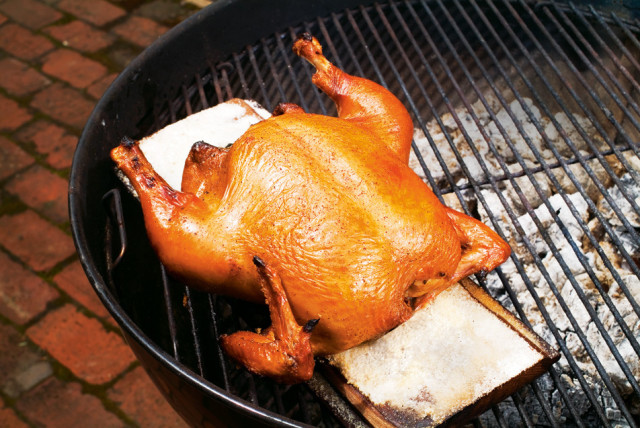
Dolich also insists that people underseason their poultry. In most cases, that puddle of barbecue sauce on your plate is just there to cover up the fact that the chicken drowning underneath it never had a shot at stimulating your taste buds in the first place.
Dolich’s solution to these miscalculations is to soak the chicken (either whole or in parts) in a simple brine for up to two days before cooking it. The salt-and-sugar solution helps keep the meat tender and moist while it’s cooking, and the addition of herbs and spices infuses the bird with more complicated flavors. After the poultry has been properly pickled, so to speak, lump your hot coals to one side of the barbecue, place the bird on water-soaked cedar planks over the cooler side of the grill and close the cover. By cooking the bird on the planks, you’ll prevent direct flames or high heat from searing your supper, and in no more than an hour or so your bird will be golden and crisp on the outside and juicy and tender inside, with a sweet, salty and smoky finish that lasts to the bone. And while Dolich’s appetizer of grilled mussels and clams and his side dish of bread and tomato salad are welcome accompaniments, you’ll find that this particular grilled bird—as opposed to the usual scorched variety—actually can stand alone.
{page break}
Grilling Seafood
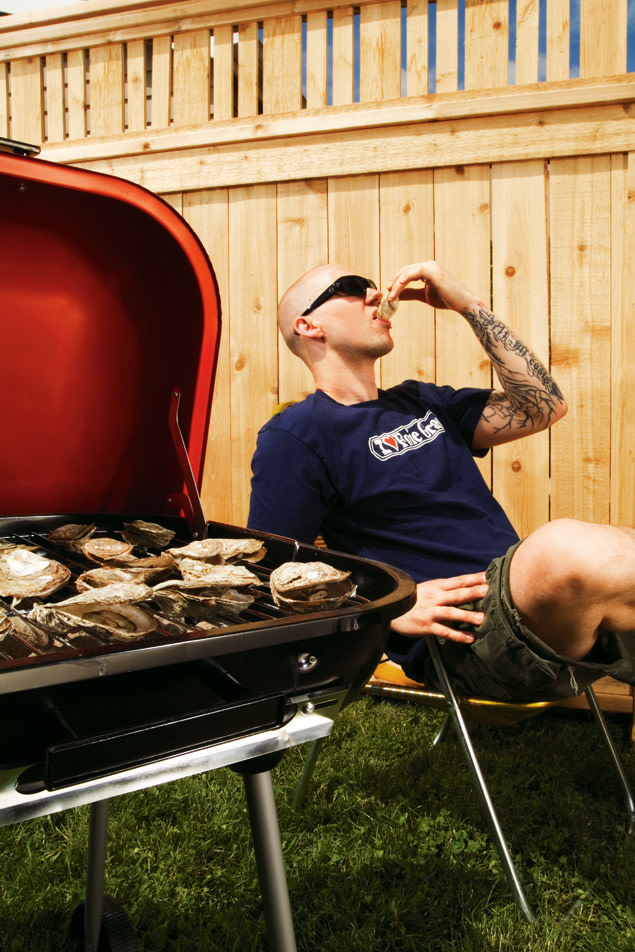
The jury may still be out on an official definition of Pacific Northwest cuisine, but most chefs in Oregon and Washington agree that grilled fish and shellfish have been a cornerstone of our region’s gastronomy for centuries. Traditional Native American cedar-planked salmon is certainly the Northwest’s most famous grilled seafood dish of export, but with easy access to manila clams, Olympia oysters, Dungeness crab and dozens of species of fish trolled from Pacific waters, we’ve no dearth of other fresh, briny ingredients to throw onto the fire.
Of course, literally throwing any old fish onto hot flames isn’t always the best idea. “Every fish is different,” says chef Eric Bechard, the seafood guru at Alberta Street Oyster Bar & Grill, who provided us with the grilled seafood menu on the following pages. “With some high-fat fish, like escolar or mackerel, you want to barely cook it. For fish like salmon and snapper, you should leave the skin on. Snapper is more delicate, so you might need to steam it in foil.” In other words grilling seafood, just like grilling meat or poultry, should be a nuanced endeavor.
{page break}
Grilling Seafood
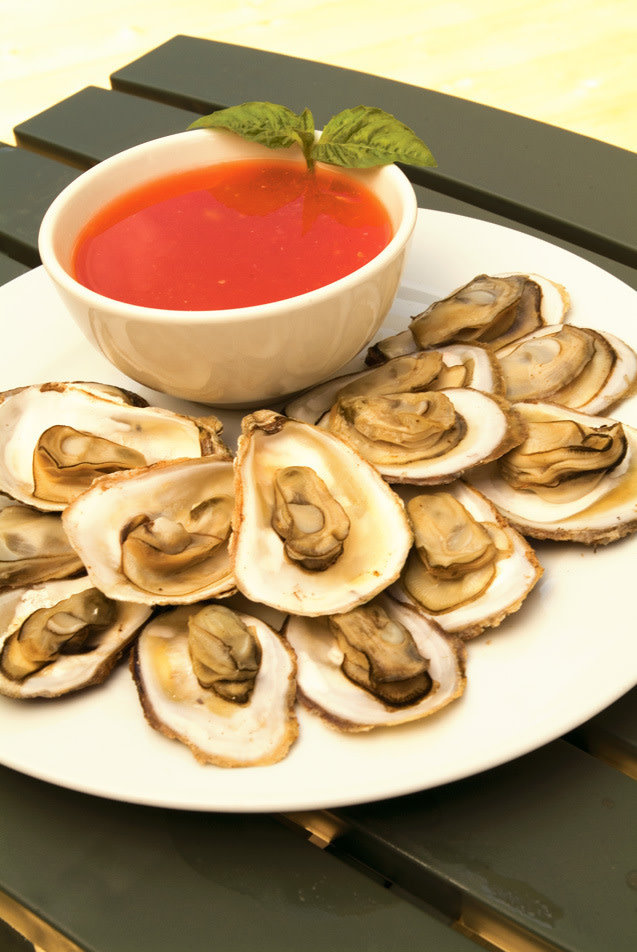
Perhaps the easiest variety of seafood to grill is shellfish, including oysters and clams, both called for in Bechard’s recipes. Once the heat of your coals has subsided to an even, medium temperature, it should only take a few minutes for the shellfish to open up, and their protective shells prevent the flavorful inner meat from burning.
Grilling fish, on the other hand, can be tricky. No matter what kind of fish you’re grilling, Bechard says you should always brush your grill with oil that has a high smoking point—Bechard prefers to use grapeseed oil or a combination of canola oil (75 percent) and olive oil (25 percent). Cooking times for each variety of fish can vary greatly—you should always ask your fishmonger for recommendations—but depending on the heat of the grill, Bechard says that “per inch, you’re looking at about three minutes on each side.”
For the tuna that’s called for in the main course here, Bechard urges backyard grillers to resist their instinct to cook it to death. “You just want to sear the outside of the fish,” he says, otherwise your tuna will taste more like a tough pork chop than a velvety delicacy from the sea. And if there’s one thing the Pacific Northwest isn’t known for, it’s pigs that swim.
{page break}
Grilling Vegetables
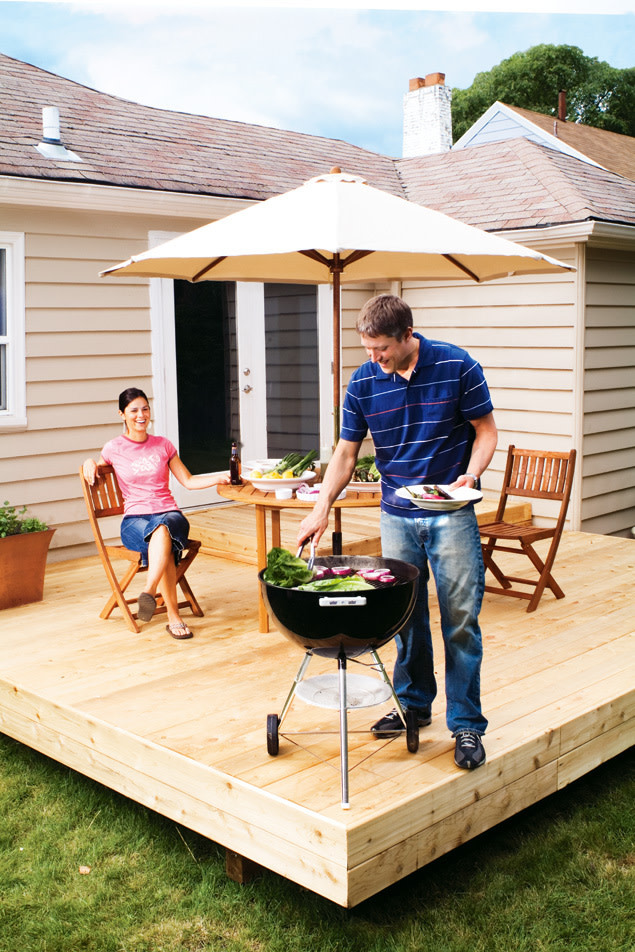
During the summer grilling months, vegetarians often get the raw end of the deal. At backyard barbecues, they’re forced to subsist on flavorless flaxseed-and-barley burgers alone, while carnivores feast on elaborate multicourse menus of thick, juicy prime ribs and fire-grilled oysters. In this month’s spirit of democracy and freedom, we’d like to suggest that all herbivores and carnivores be treated equally.
Paul Duncan, the chef de cuisine at Tabla on NE 28th Ave, fully agrees. Duncan, whose Mediterranean menu at the restaurant almost always includes one or two vegan and vegetarian options that are as fully executed as any of the meat entrées on offer, insists that vegetarians, as well as those who host them, need to start thinking more creatively about meatless grilling. “There’s a vegetarian at every one of my cookouts at home,” says Duncan. “Most think they should just have the meatless form of whatever everyone else is eating, which is usually hot dogs and burgers.” But Duncan believes that vegetarian grilling can mean anything from wood-fired vegetables and salads to the polenta cakes included in his menu on the following pages.
{page break}
Grilling Vegetables
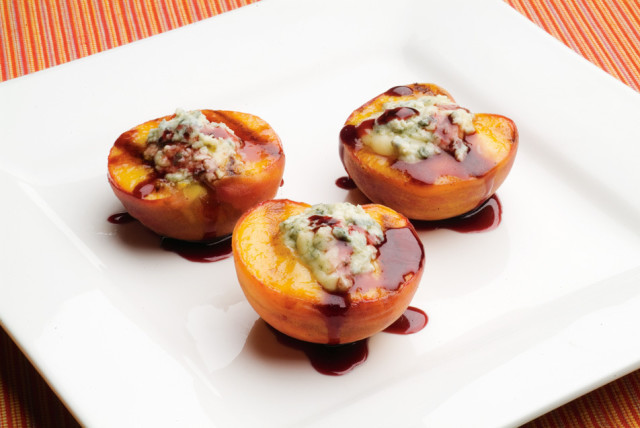
Whatever vegetarian fare you choose to grill, be sure to use plenty of oil, fresh herbs, and plain old salt and pepper to season vegetables and grains before cooking them over coals. Vegetables are more delicate than meat and they don’t have natural fats, so it’s important to keep the grill clean and well-oiled so they don’t stick to it. Rubbing or marinating vegetables with olive oil beforehand will also help them take on a smoky, caramelized sweetness as they cook, but remember to wipe off the excess oil or marinade before grilling it to avoid flare-ups.
When it comes to cooking times, vegetables and meat should be treated similarly. “Once you take meat off the grill, it can continue to cook with the residual heat inside it. Vegetables work the same way,” says Duncan. Don’t grill your vegetables over direct flames, and don’t wait until they are mushy to take them off the grill. Instead, try cooking them like you would pasta: until they become al dente (tender, but with a touch of their intrinsic crunch still intact). With vegetarians being created equal and all, don’t they deserve the right to ask for a “rare” treat every once in a while too?




